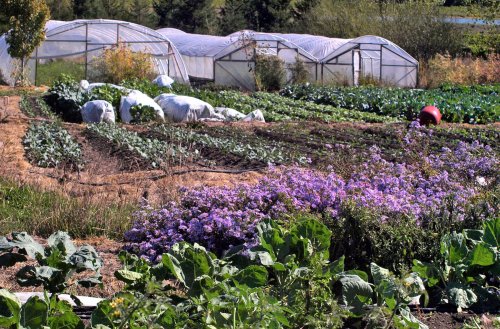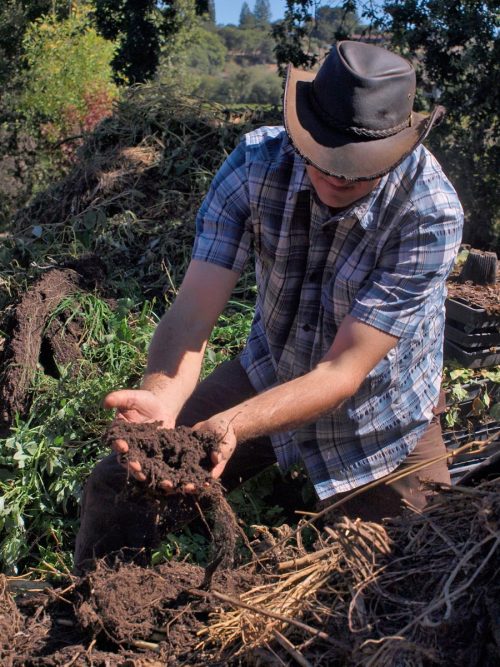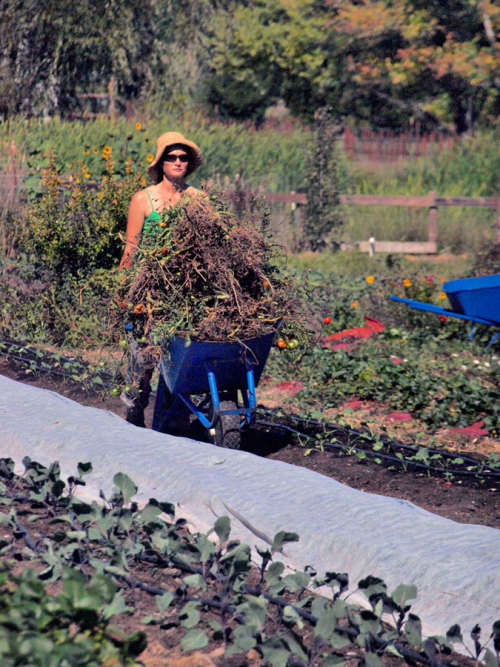The Drought Fighter (long read) Could a controversial farmer in California have found the most effec
The Drought Fighter (long read)Could a controversial farmer in California have found the most effective way to grow food in a warming world? One afternoon last March, on a small vegetable farm that Paul Kaiser runs in a particularly chilly valley in Sebastopol, California, a group of agriculture specialists gathered around a four-foot steel pole. The experts had come to test the depth and quality of Kaiser’s top-soil, and one of them, a veteran farmer from the Central Valley named Tom Willey, leaned on the pole to push it into the dirt as far as he could. On a typical farm, the pole comes to a stop against infertile hard-pan in less than a foot. But in Kaiser’s field, the pole’s entire length slid into the ground, and Willey almost fell over. “Wow, that’s incredible,” he said, wondering if he’d hit a gopher hole. The whole group burst out laughing. “Do it again! Do it again!,” said Jeff Mitchell, a longtime professor of agriculture at the University of California at Davis.The group repeated the exercise, over and over—for photo ops, and to make sure that Kaiser really had accomplished the various feats he talks about, which he does almost incessantly these days. It’s not the easiest sell. Kaiser, an ebullient former woodworker who is only 40, farms a mere eight acres, and harvests fewer than three of them. Nonetheless, his methods are at the forefront of a farming movement that is so new (at least in the U.S.), and so built for a climate-changed world of diminishing rains, that it opens up gargantuan possibilities. One might call this methodology sustainability on steroids, because it can generate substantial profits. Last year, Kaiser’s Sonoma County farm grossed more than $100,000 an acre, which is 10 times the average, per-acre income of comparable California farms. This includes Sonoma’s legendary vineyards, which have been overtaking farmland for decades, largely because wine grapes have become much more lucrative these days than food, at least the way most farmers grow it.Kaiser manages all of this without plowing an inch of his ground, without doing any weeding, and without using any sprays—either chemical or organic. And while most farmers, even on model organic farms, constantly tinker with various fertilizer cocktails, Kaiser concentrates on just one: a pile of rotten food and plants, commonly known as compost, and lots of it. Kaiser adds this compost to a rare blend of farming practices, both old and new, all aimed at returning dirt to the richest, most fertile seedbed possible. “It’s unique,” Mitchell told me after his visit. “I’ve never seen anything approaching that kind of thing.”Kaiser’s farm may be minuscule in comparison with the mega-farms that feed most Americans today. But each of Kaiser’s methods is being used, to some degree, by much larger operations—both in and outside the U.S.—with growing success. By combining all of these practices in one place, and taking a few to the extreme, Kaiser has turned his farm into an unusual, and increasingly controversial, field experiment. Judging by his progress on this experiment so far, Kaiser may not yet have solved all of the equations he thinks he has. What matters, though, is the ambition of his efforts—and his proximity to the answers. Perhaps the best name for all of those efforts, and their ultimate answers, is Organic Farming 2.0, because the standard practices of organic farming have fallen so far short of their environmental ideals. “On some of the big organic farms, the soils are incredibly destroyed,” Ray Archuleta, an agronomist with the U.S. Department of Agriculture, recently told me. The reason Archuleta gave me is almost counterintuitive: While they do avoid chemicals, most organic farmers still resort to what are essentially artificial methods of cultivation, based largely on tearing up the ground with discs and spaders, the same way conventional farmers do, then abandoning it until the next season. They also use too much water. As an illustration of Archuleta’s point, in the five years since Kaiser stopped plowing his fields, his irrigation levels have dropped by more than half, to as little as an hour a week, with production steadily increasing. He now irrigates almost exclusively with a drip system, through thin plastic tubes; meanwhile, some of his organic neighbors still run sprinklers, which require massive amounts of water, much of which is lost almost immediately through evaporation. Read the rest hereI have some quibbles and minor critiques, but overall this is a damn good story and worth reading. Also they have some choice quotes from Ray Archuleta, who is probably my favorite agronomist (if you want to learn more from Ray, Youtube and Vimeo are full of his videos). Please note that Jim Leap must be a total dumbass who doesn’t understand biology or ecosystems. If he had the slightest comprehension of how soils work he wouldn’t say such amazingly stupid things. -- source link
Tumblr Blog : plantyhamchuk.tumblr.com
#farming#agriculture#california#ray archuleta#no till



